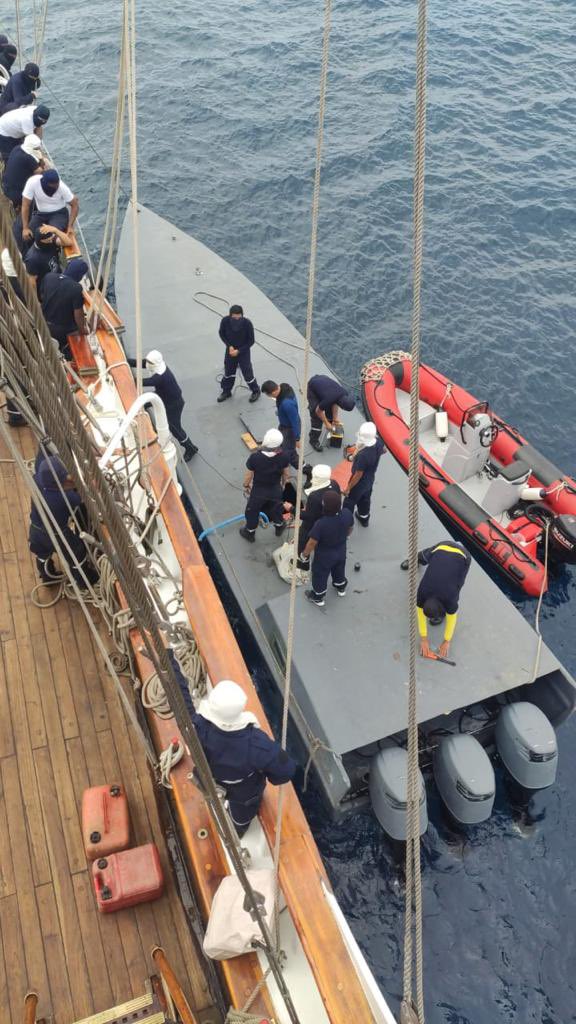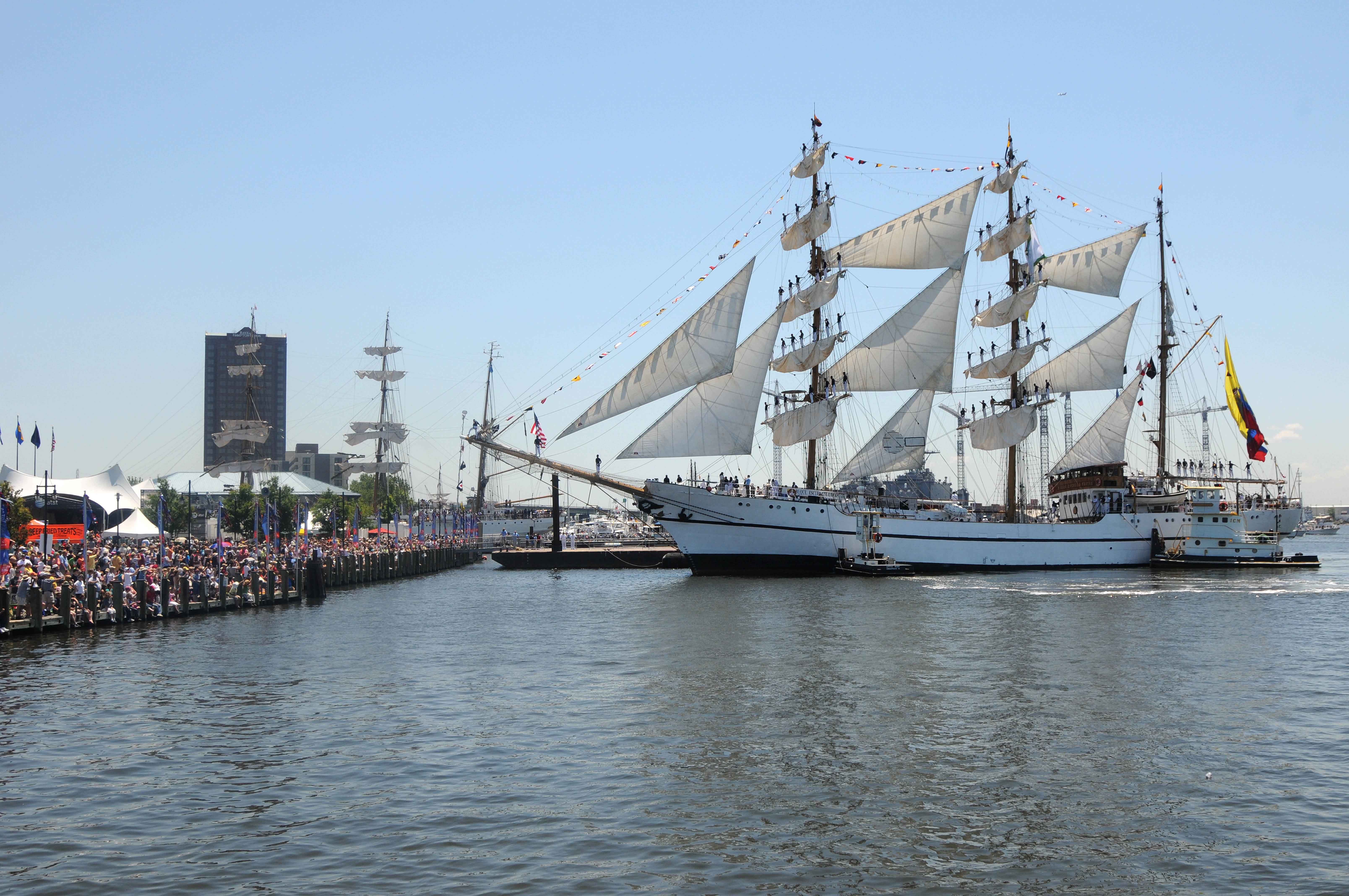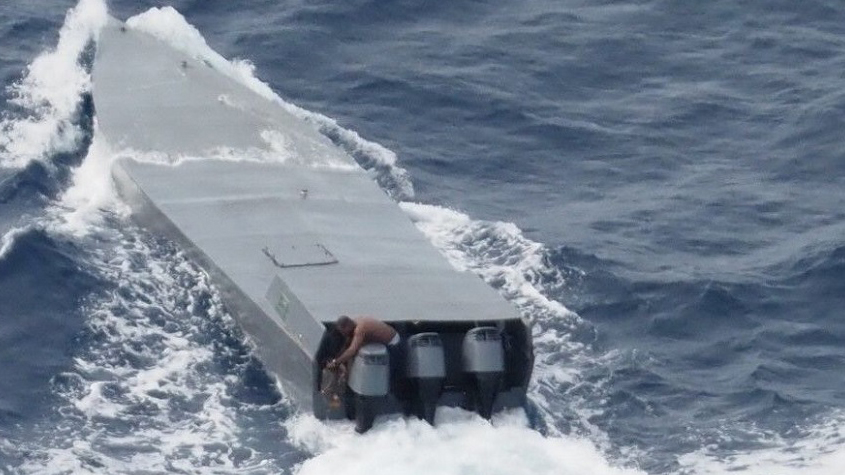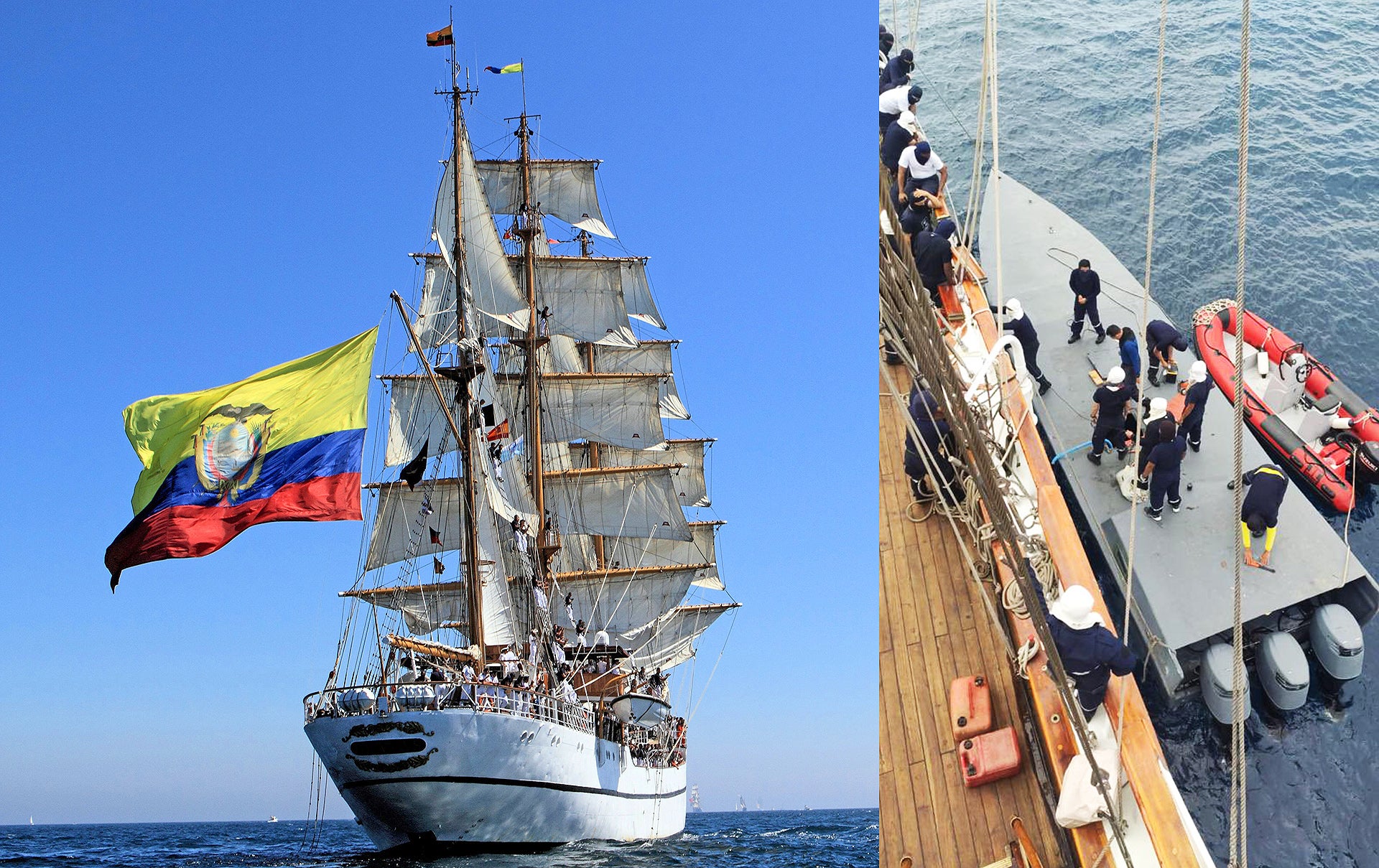In a remarkable maritime incident, a three-masted sailing ship belonging to the Ecuadorian Navy successfully interdicted a low-profile vessel, or LPV, of the type typically used by drug smugglers to transport cocaine from Colombia to North America. The BAE Guayas, employed by the Ecuadorian Navy as a dedicated training ship, intercepted the high-speed LPV in the eastern Pacific Ocean.
The incident took place in international waters between the Exclusive Economic Zone (EEZ) of Colombia and Ecuador’s Insular Exclusive Economic Zone (IEEZ), which surrounds the Galapagos islands, on Oct. 22. In a statement, the Ecuadorian Navy confirmed that the LPV had been stopped together with its crew of three Ecuadorians and a Colombian.

“The apprehended citizens and the LPV are currently being transferred to the [Ecuadorian] mainland to be handed over to the relevant authorities, in order to carry out the corresponding legal procedures,” the press release added.
The service did not announce what, if any, narcotics were found aboard the LPV, but these types of vessels are widely used for drug-running in the waters of the Pacific off the west coast of South and Central America. While some accounts describe the LPV as a “narco-submarine,” it should be noted that this one does not operate fully submerged. There are now various categories of LPVs, or self-propelled semi-submersibles (SPSS), with some being more visibly reminiscent of true submarines, while fully submersible drug submarines have been captured, as well.
In his video explainer on the incident, H. I. Sutton, an author and an expert on undersea warfare, observes that the LPV “looks like a craft-made powerboat, but runs extremely low in the water, making it hard to detect.”

“The cargo, likely cocaine of between 1.5 and 6 tons based on the imagery released, is carried in the forward hull, surrounded by fuel tanks,” Sutton explains. “The crew occupy the small cockpit at the stern, accessing the drugs via a tunnel. The three outboard motors provide reliable propulsion with built-in redundancy. These motors are ubiquitous in fishing fleets in the region and therefore are hard to trace.”
At the time of the incident, the Guayas was taking part in a routine training activity. Over 257 feet long, the vessel is a school ship built in Spain, launched in 1976, and home-based in Guayaquil, Ecuador. Outwardly, the design of this vessel recalls the tall ships of the 19th century. Unarmed, the sailing vessel has a typical crew of about 120, including 80 cadets.

According to The Maritime Executive, the Guayas set sail from Guayaquil on Sept. 10, beginning a planned 70-day voyage to Peru, Panama, and El Salvador. The same source notes 147 crew members were on board, including a contingent of fourth-year midshipmen.
It’s not clear if the LPV had been tracked long before its capture or if it was just a lucky find for the Guayas. According to the Ecuadorian Navy, other undisclosed units from the service took part in the action, which was coordinated with the Ecuadorian National Police and its department specializing in combatting organized crime, the ULCO, but no further details were provided.
It’s also possible that agencies from outside Ecuador may have been involved in the mission, too. The Ecuadorian Navy also regularly works with U.S. Southern Command on counter-narcotics missions in Latin America.
Whatever the case, the fact that a sailing vessel succeeded in capturing the high-speed LPV is impressive in itself. While the Guayas does have a supplementary diesel engine, it primarily relies on its sails and its performance would be greatly outstripped by the alleged drug-runners, whose boat was literally built for speed and stealth. That suggests the LPV in question may have broken down or was perhaps adrift for some other reason. There is also the possibility that other pursuit assets were involved, as well.

While incidents involving drug-running vessels off the coast of South and Central America are not uncommon, the participation of a three-masted sailing ship is clearly out of the ordinary. On the other hand, only last week the Ecuadorian President Guillermo Lasso declared a state of emergency to confront drug trafficking and other crimes in Ecuador.
As a result of that decree, the military and police are to step up their presence on the streets of the country, Lasso saying that drugs now represented the “number one enemy.”
While this anachronistic maritime encounter is unlikely to be repeated any time soon, it goes to show that even unconventional assets can play a vital role in helping tackle the flow of narcotics in these waters.
Contact the author: thomas@thedrive.com
